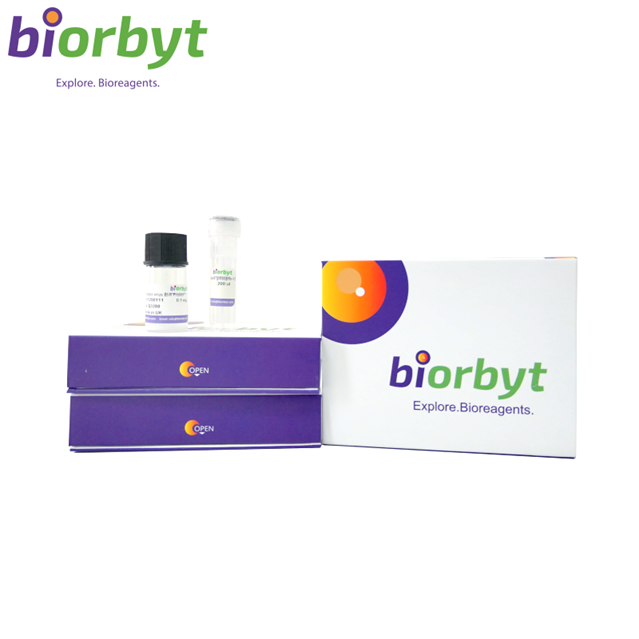You have no items in your shopping cart.
Mouse EFNB2 protein
SKU: orb391652
Description
Images & Validation
−
| Tested Applications | ELISA, MS, SDS-PAGE, WB |
|---|---|
| Application Notes |
Key Properties
−| Source | Human cells |
|---|---|
| Reactivity | Mouse |
| Protein Sequence | RSIVLEPIYW NSSNSKFLPG QGLVLYPQIG DKLDIICPKV DSKTVGQYEY YKVYMVDKDQ ADRCTIKKEN TPLLNCARPD QDVKFTIKFQ EFSPNLWGLE FQKNKDYYII STSNGSLEGL DNQEGGVCQT RAMKILMKVG QDASSAGSAR NHGPTRRPEL EAGTNGRSST TSPFVKPNPG SSTDGNSAGH SGNNLLGSEV DDIEGRMDEP KSCDKTHTCP PCPAPELLGG PSVFLFPPKP KDTLMISRTP EVTCVVVDVS HEDPEVKFNW YVDGVEVHNA KTKPREEQYN STYRVVSVLT VLHQDWLNGK EYKCKVSNKA LPAPIEKTIS KAKGQPREPQ VYTLPPSREE MTKNQVSLTC LVKGFYPSDI AVEWESNGQP ENNYKTTPPV LDSDGSFFLY SKLTVDKSRW QQGNVFSCSV MHEALHNHYT QKSLSLSPGK HHHHHH |
| Purity | Greater than 95% as determined by reducing SDS-PAGE. |
| Endotoxins | Less than 0.1 ng/μg (1 IEU/μg) as determined by LAL test. |
Storage & Handling
−| Storage | Lyophilized protein should be stored at -20°C, though stable at room temperature for 3 weeks. Reconstituted protein solution can be stored at 2-8°C for 2-7 days. Aliquots of reconstituted samples are stable at -20°C for 3 months. |
|---|---|
| Form/Appearance | Lyophilized from a 0.2 μM filtered solution of PBS, pH 7.4. |
| Disclaimer | For research use only |
Alternative Names
−EPLG5; HTKL; LERK5; Ephrin-B2; EPH-related receptor tyrosine kinase ligand 5; LERK-5; HTK ligand; HTK-L
Similar Products
−Mouse EFNB2 Protein [orb425254]
Greater than 90.0% as determined by SDS-PAGE.
Sf9, Baculovirus cells
1 μg, 5 μg, 50 μg

Quality Guarantee
Explore bioreagents carefree to elevate your research. All our products are rigorously tested for performance. If a product does not perform as described on its datasheet, our scientific support team will provide expert troubleshooting, a prompt replacement, or a refund. For full details, please see our Terms & Conditions and Buying Guide. Contact us at [email protected].
Documents Download
Datasheet
Product Information
Request a Document
Protocol Information
WB
Western Blot (IB, immunoblot)
ELISA
Enzyme-linked Immunosorbent Assay (EIA)
SDS-PAGE
Sodium Dodecyl Sulphate PolyAcrylamide Gel Electrophoresis
Mouse EFNB2 protein (orb391652)
Based on 0 reviews
Participating in our Biorbyt product reviews program enables you to support fellow scientists by sharing your firsthand experience with our products.
Login to Submit a Review